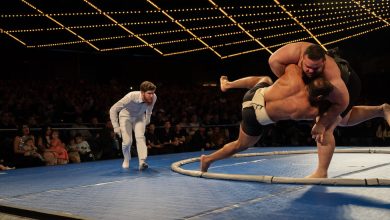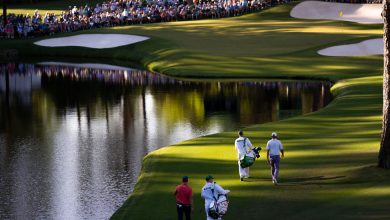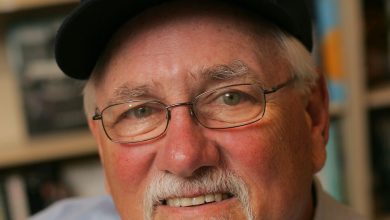The Next Generation of Men’s Tennis

Novak Djokovic dominated men’s tennis this year, but with Roger Federer and Rafael Nadal wearing down physically, 2021 also signaled a changing of the guard: Stefanos Tsitsipas reached the French Open final; Matteo Berrettini reached the Wimbledon final; Alexander Zverev won the Olympic gold medal; and Daniil Medvedev reached the Australian Open final and then won the United States Open. All are 25 or younger.
Now a new crop of youngsters, 24 and under, is charging up the rankings, but some will stall.
To separate themselves from their peers, each must refine his game; these 10 are most likely to join the sport’s elite, if they improve one aspect of their game. Following is an assessment of each player from coaches, analysts and former professionals. Rankings are through Thursday.
Casper Ruud
Norway, age 22; world ranking: 8
Ruud’s speed and all-around game shine on clay, said Tom Shimada, a coach at the Van Der Meer Tennis Academy in South Carolina, “but now he has to figure out how to play on the quicker services.”
Ruud needs more free points on serve, said Jimmy Arias, director of the IMG Academy’s tennis program in Florida and a Tennis Channel analyst. “He still has to grind on his serve and in three-of-five set tournaments that makes it difficult.”
Patrick McEnroe, a director of the John McEnroe Tennis Academy in New York and an analyst for ESPN, was pleasantly surprised by Ruud’s serves and instead feels Ruud needs “more firepower on his forehand, whether it’s more power or more spin.”
Hubert Hurkacz
Poland, age 24; ranking: 9
Hurkacz turned heads with his Miami Open win this year, but Arias said he needed to retain consistency because he sometimes lost to lesser players.
McEnroe sees that as a lack of assertiveness despite his rise in the rankings: “He needs to be more aggressive with his shots, but also with his attitude. He could use a little swagger.”
Jannik Sinner
Italy, age 20; ranking: 11
Sinner himself said he could not pick just one thing to improve. “I’m only 20 years old; I have to improve everything,” he said. “I have to improve the serve, my volleys and mixing up my game as well.”
McEnroe and Arias said he needed variety and creativity in his approach. “He’s missing the subtleties of the game,” McEnroe said, “when to hit the ball at 60 percent or to slice it down the middle and make the other guy come up with something.”
Felix Auger-Aliassime
Canada,age 21; ranking: 12
He sometimes gets tight, leading to service breaks at crucial moments. “He will just hand you a service break with two double faults and two inexplicable first-ball errors,” Arias said.
McEnroe said Auger-Aliassime was a true student of the game, so he sometimes overthinks things. “He’s looking for the perfect shot, so he makes errors,” McEnroe said. “He needs to relax, just let it go and play with more freedom, trusting his athleticism.”
Denis Shapovalov
Canada,age 22; ranking: 13
Shapovalov has been captivating fans since he shocked Nadal as an 18-year-old at the 2017 Canadian Open, but Shapovalov’s power and style can work to his detriment. “He has tremendous weapons, but he’s going for a lot,” Shimada said. Trying to blast winners is “a tough way to consistently beat the guys who play unbelievable defense.”
McEnroe said Shapovalov needed more high-percentage shots on his service return: “He tends to take big swings and has to be more consistent on the return, playing smart, neutral or even defensive shots to get in the rally.”
Reilly Opelka
United States,age 24; ranking: 26
Opelka needs confidence. “To reach the next level will require an evolution of his mind-set,” Shimada said
Arias recalled watching Opelka double fault twice in a row in Atlanta this summer, then mutter repeatedly to himself, “I should have played team sports.”
McEnroe said that at 6-foot-11, Opelka needed to maximize his size and power, going bigger on forehands, returns and serves. “He jokes about not wanting to be a ‘serve-bot,’ but he should play like one more often,” McEnroe said. “To beat the top players, he has to overpower them.”
Sebastian Korda
United States,age 21; ranking: 38
Korda soared from 119th this year, but his continued climb requires a better serve, Shimada said, citing his loss to Karen Khachanov at Wimbledon, where Korda was broken seven times in the fifth set as Exhibit A.
“You can’t have that happen,” McEnroe said. “The serve has to get better, and he needs to get stronger and impose himself more.”
Carlos Alcaraz
Spain,age 18; ranking: 40
Even for this article, which is essentially nit-picking, Arias, McEnroe and Shimada were stumped when it came to the dynamic Alcaraz, who jumped in the rankings from 141 this year.
“If I had to pick one guy where you can’t come up with one thing, it’s Alcaraz,” McEnroe said. “He can do it all, and he has moxie.”
Jenson Brooksby
United States, age 21; ranking: 56
He believes he needs to commit to being physical and running through the ball in points to avoid going on the defensive. “That’s what I’m working on the most,” Brooksby said.
While Shimada, McEnroe and Arias are dazzled by his movement and feel, and his unusual strokes and style, they said his big problem was really his serve.
“For his size, [6-foot-4], his serve is mediocre at best,” McEnroe said.
He will need a dangerous serve to win a major, but if he improves there, Arias said, look out.
“With a bigger serve, he could be the American Daniil Medvedev.”
Lorenzo Musetti
Italy, age 19; ranking: 65
He is straightforward in his self-analysis. “I need to improve my serve, but especially my return and especially on hard courts,” said Musetti, a clay-court specialist. “With my one-handed backhand, I need to work on stepping to the ball.”
Give him points for self-awareness. “He just doesn’t do enough with the serve,” Shimada said, while Arias said that with a one-handed backhand, Musetti needed to at least get to neutral on returns (hit them harder so he does not start rallies at a disadvantage).
McEnroe said Musetti “doesn’t step in as naturally as some other guys and needs to take the ball a little earlier.”



